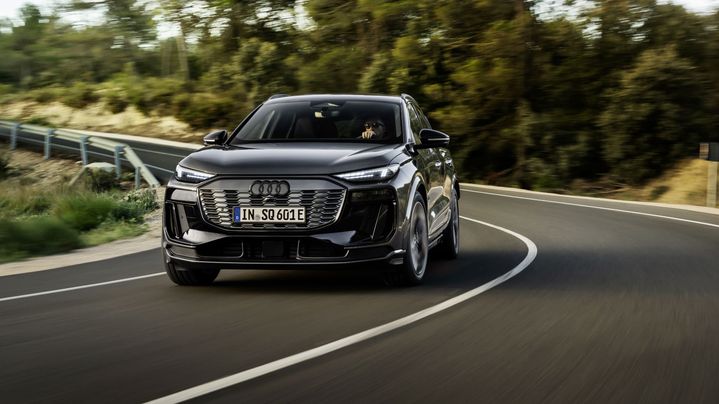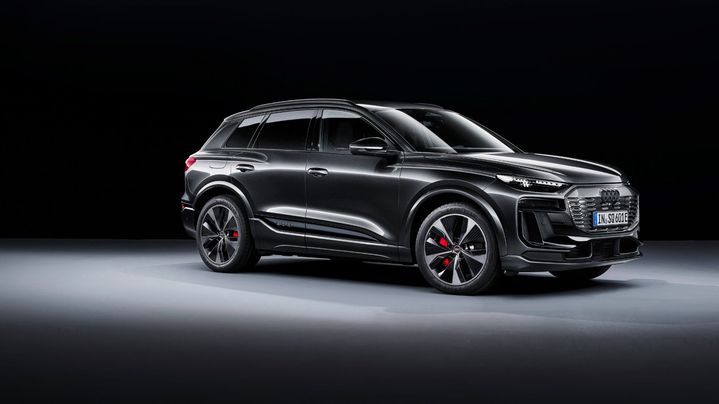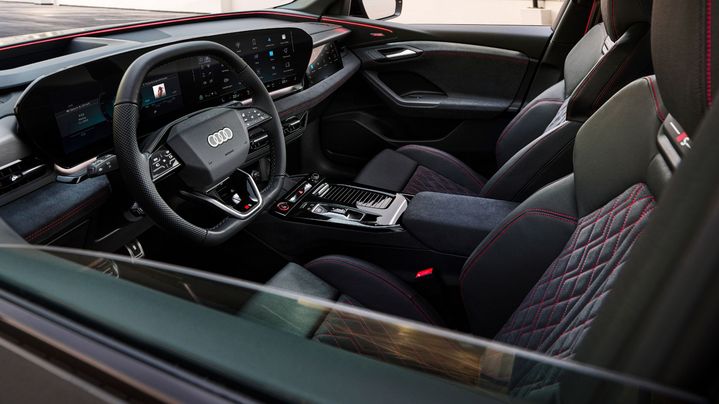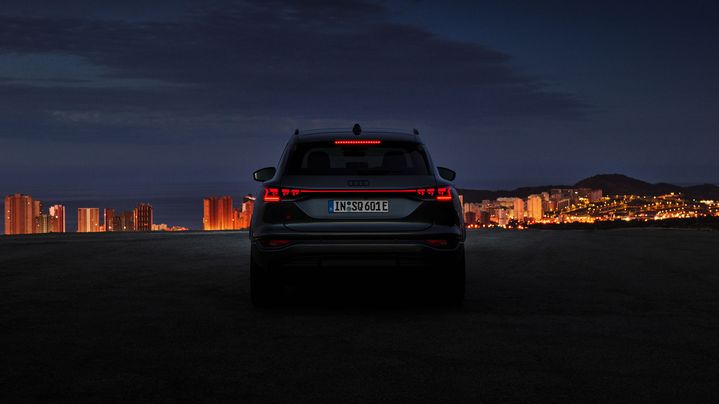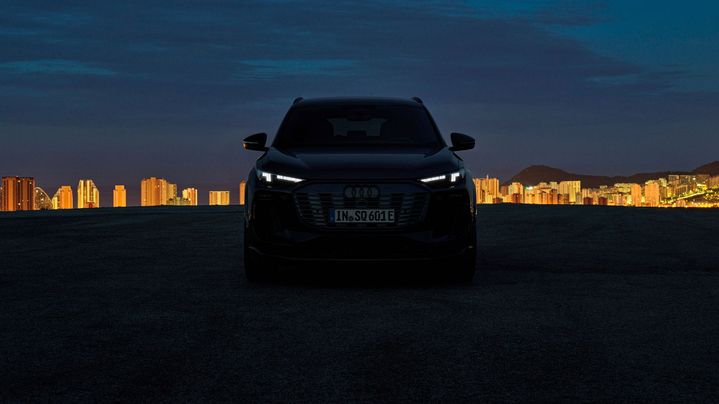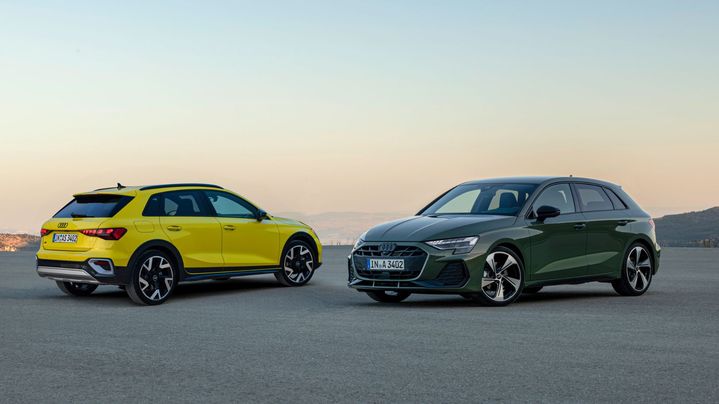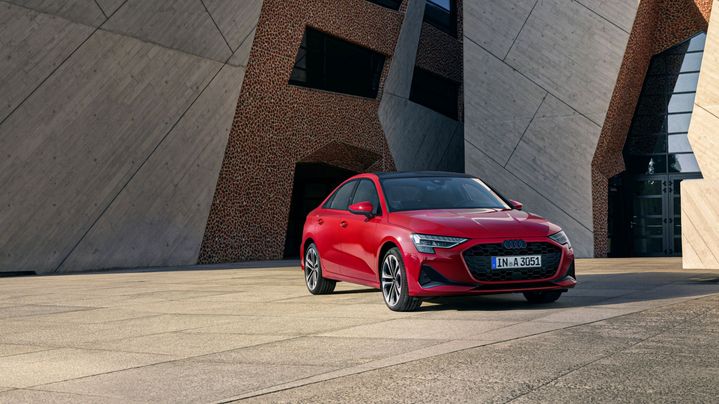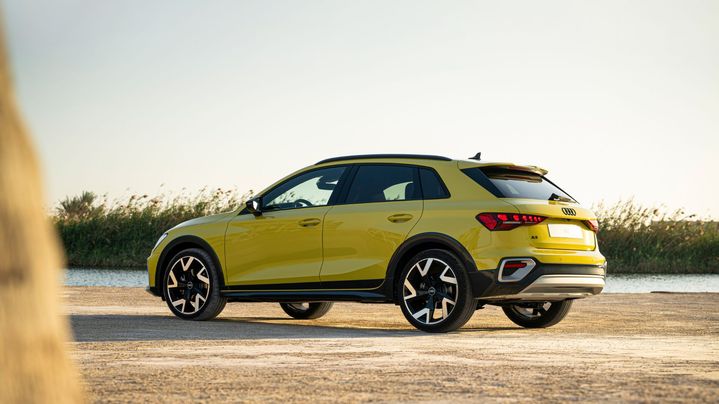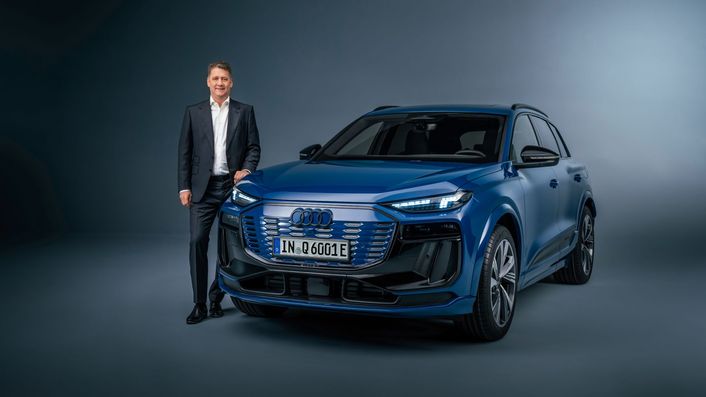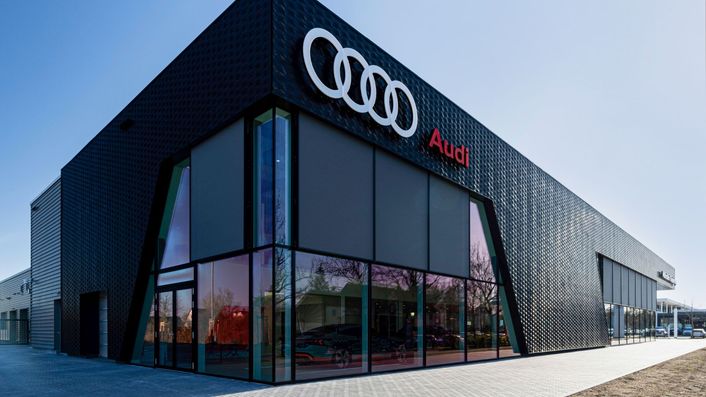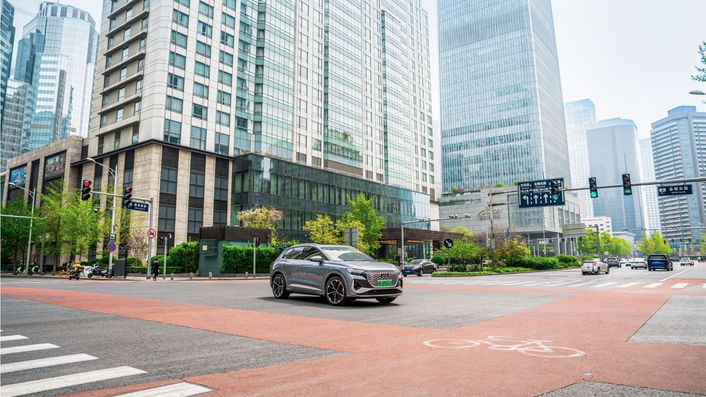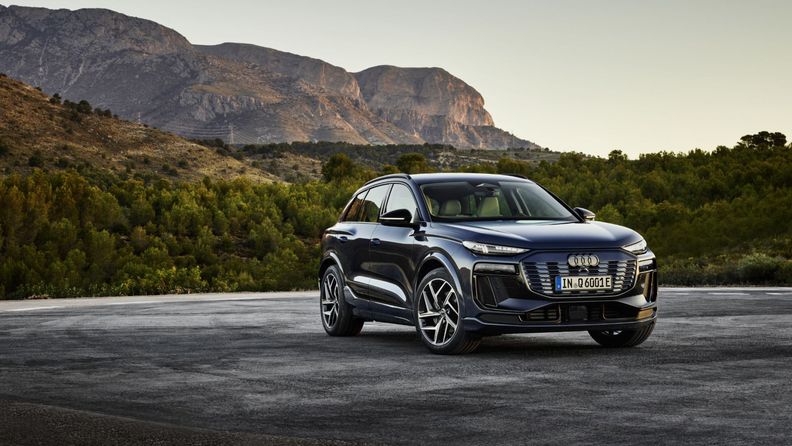Audi is strengthening the product portfolio with many new models and a clear technology roadmap
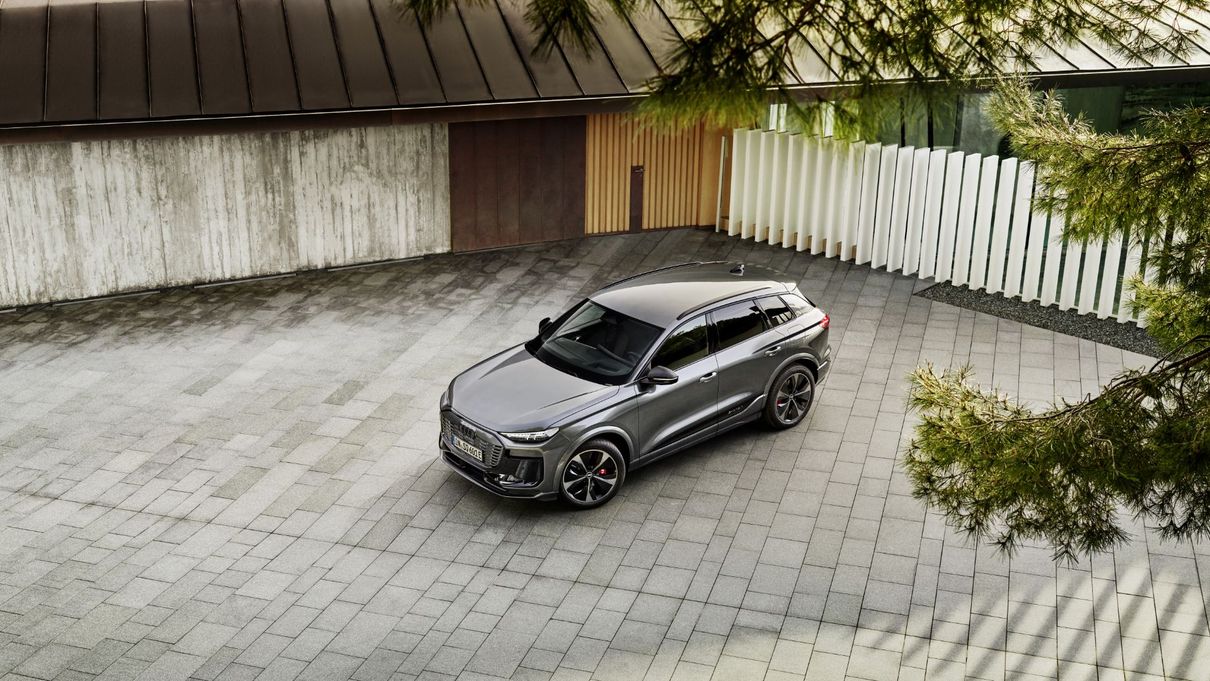
Audi SQ6 e-tron: electric power consumption (combined): 18.4–17.5 kWh/100 km; CO₂ emissions (combined): 0 g/km; CO₂ class: A
Audi SQ6 e-tron: electric power consumption (combined): 18.4–17.5 kWh/100 km; CO₂ emissions (combined): 0 g/km; CO₂ class: A
Audi will significantly strengthen and expand its model portfolio in the coming years by introducing a large number of new models. In 2023, the company already launched the Audi Q8 e-tron1 on the market. It is the successor to the brand’s electric pioneer, Audi e-tron.2 The Audi A6 and A7 family, including the RS variants, as well as the Audi Q8 with a combustion engine were also updated. “Our model initiative will pick up considerable momentum in 2024,” says Döllner. First of all, the fully electric Audi Q6 e-tron and Audi A6 e-tron3 will be launched on the Premium Platform Electric (PPE). They will be followed in the second half of the year by the Audi A5 family3 and the Audi Q53 on the Premium Platform Combustion (PPC) for vehicles with combustion engines. The Audi A3 model series will already receive a comprehensive update in the first half of the year.
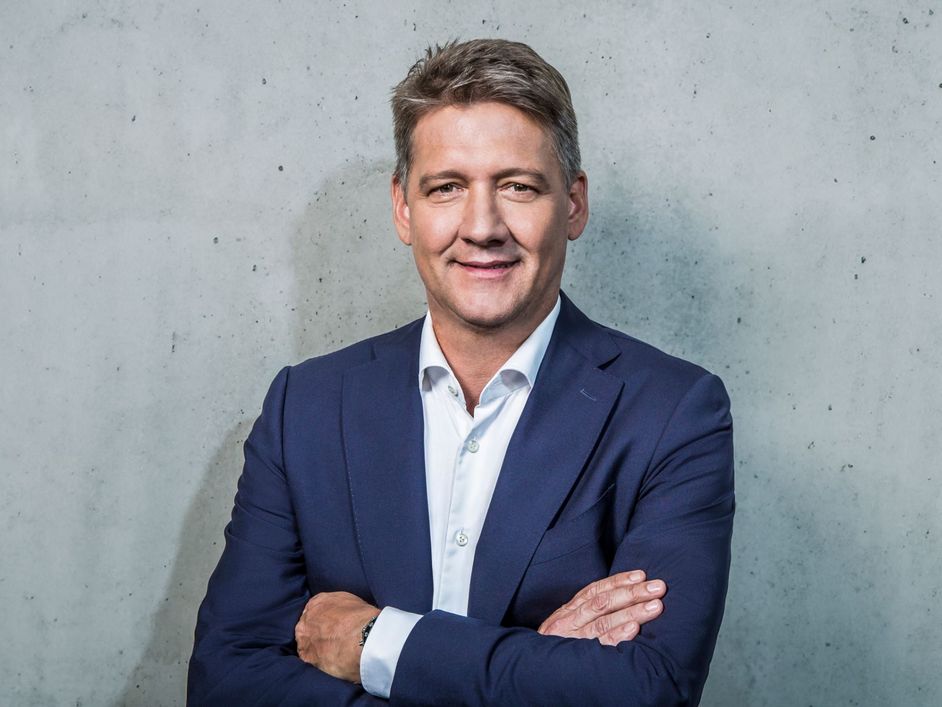
“We will transform our product portfolio and switch to electric vehicles.”
– Gernot Döllner, Chairman of the Board of Management of AUDI AG
“In 2024 and 2025, we will strengthen and rejuvenate our portfolio with a number of new products. All in all, we’re planning to launch more than 20 new models. The focus will be on our future-oriented electric cars. At the same time, we’re putting ourselves in a strong position for the coming years with a completely new generation of combustion engine models and plug-in hybrids,” summarizes CEO Gernot Döllner. To get this product initiative on the road, Audi has started to further develop its international production network. Two of the goals are to improve flexibility so that combustion engine models and electric models can increasingly be produced on one line and eventually to switch completely to producing electric vehicles.
“Audi plants are going electric”
Gerd Walker, Member of the Board of Management of AUDI AG, Production and Logistics

Gerd Walker, Member of the Board of Management of AUDI AG, Production and Logistics
Gerd Walker:
We are moving toward electric mobility at a rapid pace. This is true for both our product portfolio and our production sites. We are already producing several fully electric models today, such as the Audi Q6 e‑tron in Ingolstadt, the Audi Q8 e-tron1 in Brussels (Belgium) and the Audi e-tron GT4 at Böllinger Höfe near Neckarsulm. In addition, there is the electric drive production facility in Győr (Hungary), where more than 400,000 electric drive systems have been produced since 2018. And since 2021, the Audi Q4 e-tron family has been rolling off the production line at the Volkswagen multi-brand plant in Zwickau – in the familiar Audi premium quality. The goal is for all of our Audi plants to produce at least one electric model by the end of the decade.
We have a highly motivated production team to tackle the challenges of electrification and have decided to use and transform our existing global production network. That saves resources and makes us more flexible. In Ingolstadt, for example, we have integrated the Audi Q6 e‑tron into existing structures of the assembly line for the Audi A4 and Audi A5. As early as 2025, two out of four model series built there will be fully electric. An important building block is to further optimize our production processes. We have set ourselves the goal of doubling the flexibility of our production system by 2033 and cutting our global factory costs in half on average. We will also continue to minimize our environmental impact and improve our attractiveness as an employer. Because one thing is clear: the transformation to electric mobility will only work if we can rely on our highly qualified employees. Their expertise, passion and commitment are the foundation of our success.
Audi’s long-term focus is on electric models and software-defined vehicles
In the long term, there is only one way forward for Audi: switching to pure battery-electric mobility. Döllner looks ahead: “Our portfolio strategy is set out clearly. We will transform our product portfolio and switch completely to electric vehicles. Our customers will experience the last major world premieres of new model lines with conventional drive systems in the course of 2026.” By 2027, the brand with the Four Rings wants to offer an all-electric vehicle in its portfolio in all core segments. The long-term aim is to once again round off the range with highly emotional models that shape the brand, like the iconic Audi TT,5 Audi A5 und Audi R85 once did. “Whether SUV, coupé, convertible or crossover – we’re in the process of evaluating various concepts. What’s important to me is that each model has a unique role in the portfolio so that we are able to meet all of our customers’ preferences,” says the CEO, describing the decision-making process.
Software-defined vehicles (SDVs) will play an important role in the future. In these vehicles, it is the software that plays the lead role in the development process. This means that future Audi vehicles will be designed and developed on the basis of the software. In addition, they will be updated with new functions throughout their entire life cycle. “This is a topic that concerns the entire company, not just Technical Development,” Gernot Döllner clarifies. Together with the Group software unit CARIAD and the Volkswagen brand, Audi has established a project house and put together an initial team of Audi experts. “These colleagues fundamentally restructure projects and development processes while remaining closely connected to the core team.” The aim of this collaboration is to develop cutting-edge software-defined vehicles for Audi.
Distinct Audi DNA in all vehicles from the Four Rings
Whether electric motor or combustion engine, entry-level or luxury segment, Sedan, Avant or SUV – all models from the Four Rings carry the Audi DNA. It lends each model its own character and is set to be refined in the future for each model to make it even more tangible.
When driving, for example: anyone who drives an Audi must be able to feel Audi – in the form of harmonious, distinctive driving characteristics. The driving experience is unmistakable, and the driving dynamics and driving comfort are well-balanced. The key to this is the interaction between various components such as the suspension, steering and drive system, as well as the braking and control systems. In the future, efficiency is to be one of the differentiating features of Audi vehicles. Certain models will additionally be created to stand out from the competition through a combination of sporty performance in conjunction with quattro.
And the DNA also extends to the interior, where aspects such as finish, appearance and choice of materials – which have been Audi strengths for decades – are complemented by digital elements. The interior is increasingly becoming a platform for digital content in the vehicle. Infotainment, connectivity and intuitive operation are key elements for a premium in-car experience. That is why new Audi models are being designed more than ever from the inside out and with the user in mind. The goal is clear: to ensure that customers have the best possible user experience across the entire portfolio in the future.
In the long term, selected models are also expected to set themselves apart by offering automated driving functions and providing passengers with completely new ways of spending their time in the vehicle. Another hallmark of future Audi models will be sustainably designed interiors – for example, through the use of materials sourced from circular economy processes.
The exterior design is, of course, also unmistakable: design was, is and will remain a central part of the Audi DNA. It makes innovative technologies visible and reconciles supposed contradictions. That applies to the differentiation between A/Q and R product lines, within the model families and between the electric and combustion engine worlds. Especially a dedicated electric platform like the PPE with its specific properties makes it possible to achieve great proportions: short overhangs and a long wheelbase, plus a slim cabin on a strong body. That not only looks good, but also helps maximize aerodynamic efficiency and can therefore increase the range. In the future, design will be even more of a unique selling point for the Audi portfolio in the competitive arena.
Audi Q6 e-tron and PPE as a reference for “Vorsprung durch Technik”
The new Audi Q6 e‑tron is representative of the refined Audi DNA and brings “Vorsprung durch Technik” to life. This fully electric midsize SUV fits right into model portfolio between the Audi Q4 e‑tron and Audi Q8 e-tron.1 It is the first Audi model to be based on the new Premium Platform Electric (PPE) and features the E³ 1.2 electronics architecture, which has also been completely newly developed. The Audi Q6 e‑tron thus offers customers added value in many fields of technology and sets new standards in terms of performance, range, charging, driving dynamics and design. In particular, high-performance and highly efficient electric motors, a powerful battery, intelligent thermal management and the 800-volt architecture contribute to this.
“More and more recycled materials in series-production models”
Renate Vachenauer, Member of the Board of Management of AUDI AG, Procurement

Renate Vachenauer, Member of the Board of Management of AUDI AG, Procurement
Renate Vachenauer:
Producing an Audi is complex and time-consuming because the many thousands of individual parts and the necessary raw materials come from widely branched supply chains. We work with around 14,000 suppliers in more than 60 countries. This means we have a great deal of influence, along with a great deal of responsibility. And we take advantage of that: our supply chain management is a powerful lever for a more sustainable future – socially, ecologically and economically.
Innovations in areas such as the circular economy are likely to make an important contribution in the future. In collaboration with our partners, we are therefore intensively researching and testing how we can use recycled materials, some of which come from end-of-life vehicles, in our models. Our focus here is on the materials of aluminum, steel, glass and plastic as well as the battery. These efforts are paying off: for instance, we already use up to 30 percent damaged and irreparable automotive glass in the production of windshields for the Audi Q4 e-tron. The steel required for the exterior roof parts of the Audi Q6 e-tron is also partly produced using scrap steel from end-of-life vehicles, for example. Our goal is to continuously increase the amount of recycled materials in our vehicles – wherever this is technically possible, ecologically worthwhile and economically viable.
In the PPE, the developers consistently paid close attention to tailoring technical components to the specific requirements of a battery-electric vehicle right from the start. This results in advantages with regard to available space, efficiency and performance. The lithium-ion batteries and electric motors used are scalable, offering the possibility to enable a wide spectrum of range and performance. The design of the PPE offers a great deal of flexibility so that both high-floor and low-floor models are possible in the midsize and full-size segments. “The PPE shows how we pool expertise within the Volkswagen Group and thus make electric mobility scalable. Thanks to the PPE, we’re able to launch a wide variety of models with sophisticated technology,” says Audi CEO Döllner. The flexibility of the PPE will help give future models an independent character along with the typical Audi DNA.
Audi worldwide
Models, products and services – switch to your country / sales region website and discover the regional diversity of Audi.
